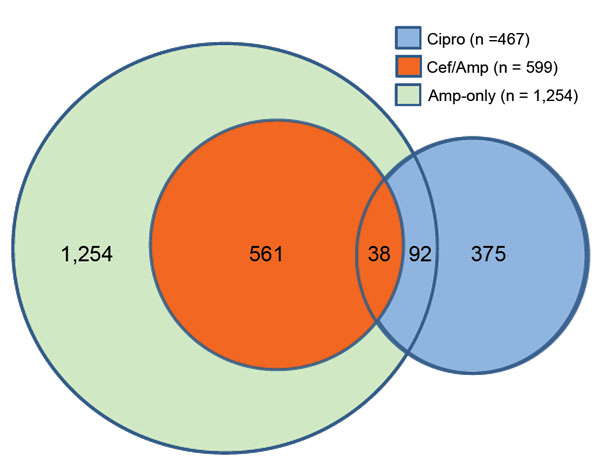Volume 23, Number 1—January 2017
Research
Estimated Incidence of Antimicrobial Drug–Resistant Nontyphoidal Salmonella Infections, United States, 2004–2012
Figure 1

Figure 1. Number of nontyphoidal Salmonella isolates with clinically important resistance, by resistance category, United States, 2004–2012. Three mutually exclusive categories were defined. Isolates in each category may have resistance to other agents: 99% of the 599 Cef/Amp isolates, 43% of the 467 Cipro isolates, and 89% of the 1,254 Amp-only isolates were resistant to >1 antimicrobial class other than cephems, quinolones, or penicillins. Amp-only, resistant to ampicillin but susceptible to ceftriaxone and ciprofloxacin; Cef/Amp, resistant to ceftriaxone (MIC >4 μg/mL) and ampicillin (MIC >32 μg/mL); Cipro, nonsusceptible to ciprofloxacin (MIC >0.12 μg /mL) but susceptible to ceftriaxone; NTS, nontyphoidal Salmonella.
Page created: December 14, 2016
Page updated: December 14, 2016
Page reviewed: December 14, 2016
The conclusions, findings, and opinions expressed by authors contributing to this journal do not necessarily reflect the official position of the U.S. Department of Health and Human Services, the Public Health Service, the Centers for Disease Control and Prevention, or the authors' affiliated institutions. Use of trade names is for identification only and does not imply endorsement by any of the groups named above.